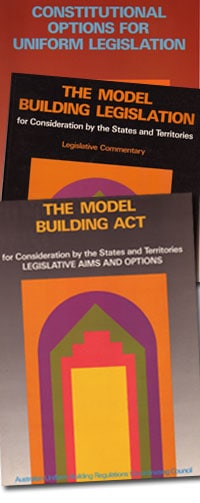
Nine Ways to Fix Building Regulation in Victoria
By Justin Cotton, Director, Lovegrove & Cotton
 When you reform an Act of Parliament, it is important to get it right and avoid “tossing the baby out with the bath water.” As in a game of chess, every move must be thought through with due consideration given to likely consequences. This is not entirely unlike the process of drafting a contract for a large commercial building project.
When you reform an Act of Parliament, it is important to get it right and avoid “tossing the baby out with the bath water.” As in a game of chess, every move must be thought through with due consideration given to likely consequences. This is not entirely unlike the process of drafting a contract for a large commercial building project.
Seasoned law reformers, who must have a strong track record, be independent and able to engage with policy makers in a candid manner, need to be engaged.
So too should key stakeholders, who should ideally have a degree of ownership in the process. A case in point was the Building Act introduced in the mid-1990s. Despite these changes having been the most radical in history, industry, consumers, insurers and local government were all “on board” and the legislation passed in a seamless manner.
In terms of specific changes which need to be made, these should be geared around refocusing the Act upon its original area of building control (it was never intended to be about “greenification”, security of payments or anything else).
This includes:
- Fixing up the building control regime, improving building surveyor probity and introducing compulsory CPD for these practitioners.
- Auditing surveyors annually (like some other professions, such as lawyers) with the cost of an independent auditor being borne by individual practitioners themselves.
- Reconsidering the dismantlement of the Building Practitioners Board and asking whether or not it could instead by strengthened by appointing more consumer representatives, beefing up its powers, increasing fines, boosting its resources and making it truly independent from the VBA.
- Banning private surveyors from sanctioning alternative solutions, re-introducing independent peer review and regulating fee floors for certification services to ensure surveyors don’t cannibalise each other with underquoting.
- Improving accessibility to the Building Appeals Board for home owners and adjoining owners and maintaining a database of reported decisions.
- More clearly demarcating the respective roles of local council building departments and private building surveyors in the enforcement of building regulations.
- Clarifying procedures to be followed where building permits “lapse” and defining the role of building surveyors after an Occupancy Permit has issued (currently a no-man’s-land).
- Using money from fines and penalties to beef up funding for continuing professional education (CPD) which, as stated above, should be mandatory.
- Giving serious consideration to insurance reform, such as whether it is possible to have “run off” cover for some practitioners, or to match the period of domestic builder insurance to the 10 year liability cap.
As time goes on, debate surrounding the system and how it can be improved will continue.
Whilst wholesale changes may not be necessary (‘if it ain’t broke, don’t fix it’), there is scope for improvement in current arrangements.
Opportunities to implement this must be taken.
Lovegrove & Cotton Lawyers to the building industry
For thirty years, Lovegrove & Cotton have represented builders, building surveyors and building practitioners in Melbourne, Canberra, Sydney and Queensland. Doyles Guide ranks Kim Lovegrove as one of the leading construction lawyers in Australia. Justin Cotton, likewise, is a leading Australian construction lawyer and widely respected in the building fraternity as evidenced by his recent elevation to Chairperson of the HIA Industrial Relations and Legal Services Committee, and member of the Regional Executive Committee, for HIA Victorian Chapter. Lovegrove & Cotton can help practitioners resolve any type of building dispute and are preeminent in the area of building practitioner advocacy. If you wish to engage the firm, feel free to contact us via our website or by emailing enquiries@lclawyers.com.au.
